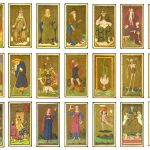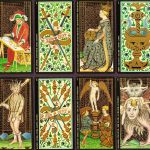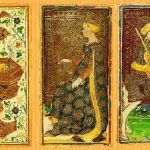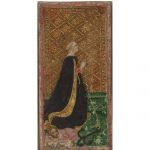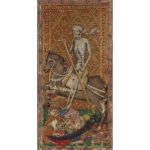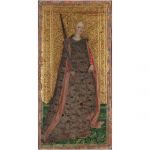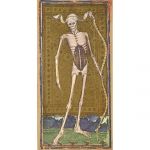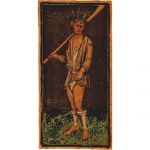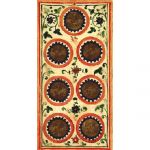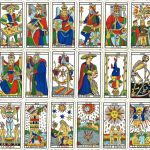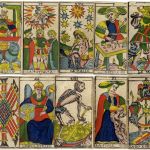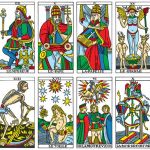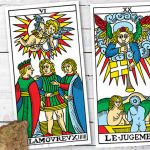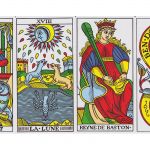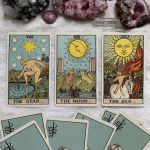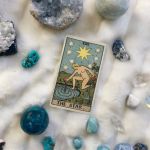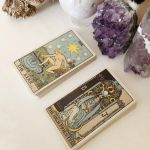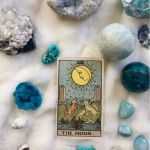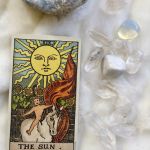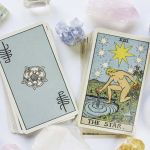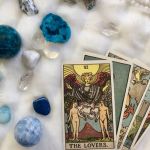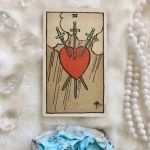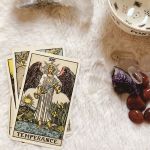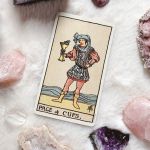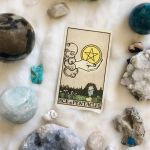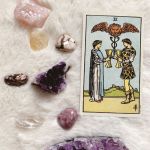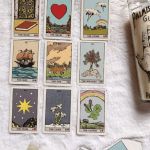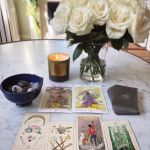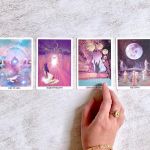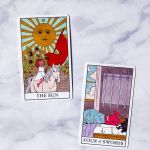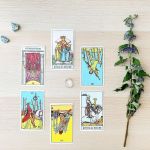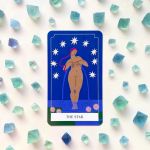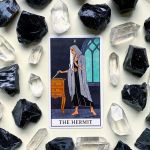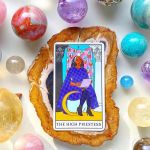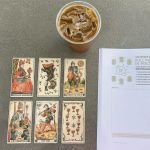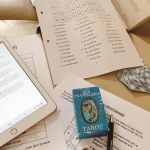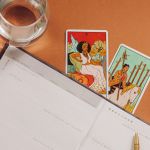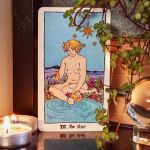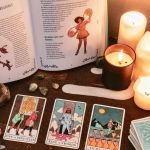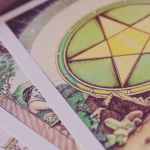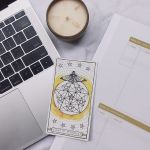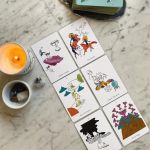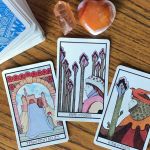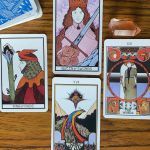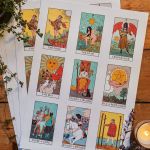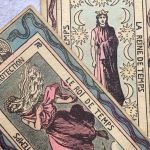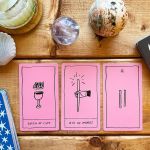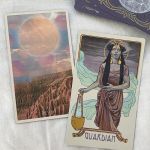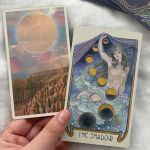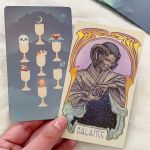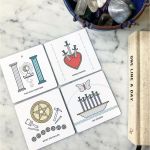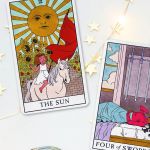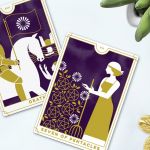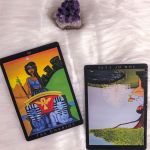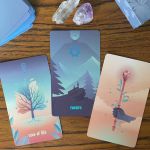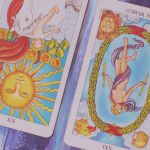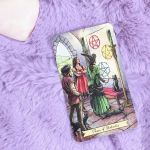
Tarot reading guide for beginners
All the secrets of the most beloved deck of cards of the esoteric world
November 6th, 2023
Before becoming a method of divination, Tarot cards had a very long history, which according to some experts began in Ancient Egypt; for others the origins are lost in the mysteries of the Kabbalah, then shaping in the medieval courts and moving forward, allegory after allegory, to the present day, passing through France, through the libraries of the nineteenth century occultists, and through countless philosophy schools.
Born as a card game, over the centuries they have assumed a leading role in esoteric salons and in the popular culture, not only in Italy. How many times have you heard "my grandmother can read the cards", "let's go to see my aunt, she can read us the tarots"? Perhaps you will be surprised to know that one of the first decks was made in northern Italy, in Milan, but we will talk about this in a moment. Today these cards are no longer just a game, but a fascinating way to discover yourself. This is why it is important to better understand their story, their meaning and the right way to approach them.
Cartomancy is a very sophisticated art. With this beginners guide by nss G-Club we will just explain the very initial and basic notions of Tarot reading. In fact, the study of cartomancy requires in-depth studies, as well as a lot of practice to master their many facets. Follow the content of @nssgclub and @catterina_fortuneteller for further information.
The history of Tarot cards
The origins are a mystery: according to some expert, the cards arrived in Europe through Egyptian merchants traveling between Italy and North Africa during the Middle Ages, according to others they came from China, through the Silk Road. Legends aside, history has handed down a series of decks that are historically considered the first ones, dating back to the 15th century and made in northern Italy. Very popular in the late Middle Ages, Tarot became a popular game throughout the ages, to the point that some of these cards are still used today for example for card games. The traditional Tarot deck is composed of 22 cards called Major Arcana (or Triumphs) and 56 Minor Arcana (similar to trump cards, in short).
The oldest decks are the ones from the Visconti-Sforza court of Milan, still existing today in about fifteen variants all over the world. Most likely, it was from these images that the famous Marseillaise deck, traditionally the most common and used deck, took shape. The cards were so successful that they were also used for the games in other Italian courts and throughout Europe. However, it will take many centuries to use them with new objectives: among the first to use a deck to "read the future" we mention Antoine Court de Gébelin and Jean-Baptiste Alliette, active towards the end of the 18th century in Paris. Alliette in particular was the first to mention a connection between tarot cards and Ancient Egypt. The first occultists saw the origin of the deck in the ancient Book of Thot and the Egyptian mystery; in the twentieth century, the famous esotericist Aleisteir Crowley was fascinated by the studies of the Hebrew Kabbalah to create new overlaps of meaning between this and the 78 cards, stating that "The only interesting theory on Tarot is that they are a symbolic picture of the Universe". An idea shared by another of the greatest tarologists of the 20th century, Alejandro Jodorowsky, father of a method that moves away from the search for a "prediction of the future" but investigates the reasons for a question, going to find the answers in the inner self of each consultant.
What the Tarot deck includes
Each tarot deck consists of 78 cards:
56 are the so-called Minor Arcana, divided into four suits: sticks, swords, cups and coins, which represent the elements earth, fire, water and air, just like in astrology. Each of the four suits includes four court cards: jack, queen, king, and knight.
22 are the Major Arcana or Triumphs, which include 21 numbered cards and one without number, the Fool.
In the beginners readings, you can use just the Major Arcana, which provide general but not very detailed readings if you are looking for the answer to a complex question. The Minor Arcana, on the other hand, often provide deeper shades that can "illuminate" the meaning of the Majors and in general represent a much more detailed and complex symbolic world. The advice, however, remains for beginners to start using only the Major Arcana and then move on to more complicated readings that also include the Minor.
How to read Tarot cards
There are many different techniques of Tarot reading and, by reading manuals from expert fortune tellers or by consulting the most popular readings online, it is clear that each fortune teller has his/her own personal style. However, there are basic rules for everyone:
Before starting the reading, the consultants should ask a specific question or clarify for which area of their life they want the reading to take place.
The deck need to be shuffled before each reading, often by both the fortune teller and the consultant.
The cards are then scattered in front of the consultant who need to choose them while they are still covered and place them according to the instructions of the fortune teller who will read them.
Two beginners readings that can be performed and whose rules are fixed are:
The Reading of Yes and No, which involves the use of a single card, drawn by the consultant, and the meaning will be interpreted according to the meaning of the single card.
The Reading of the Three Cards, which is a draw of three cards that needs always to. be read from left to right and which represent the Past, the Present and the Future according to the question of the consultant.
Another popular reading is the Celtic Cross, which in one of the most popular variants and involves the use of ten cards positioned in a cross. There are also readings that vary from fortune teller to fortune teller, also focused on the consultant's astrological birth chart or specifically designed to talk about affective themes.
Which deck is better to choose?
According to the tradition, the Tarot deck should be given as a gift, but nothing prevents you from buying yours. For a fortune teller, in fact, the deck should be a deeply personal item and it is good that, if no one gives you a deck, you feel free to choose yours according to personal taste and, why not, the positive energy it gives to you. In the process of choosing a deck, let yourself follow your inspiration: the deck whose style impresses you the most will always be the best choice.
A last tip: Tarot reading is often based on precise visual elements present in each card and which many modern decks lack altogether. So choose the deck you prefer but consider that if the cards you buy are devoid of the traditional iconography of the tarot it will be more complicated, during the readings, remember the symbolic meanings of each card coming from the traditional Marseille deck. This doesn't have to be a deterrent, it's okay to find your own reading style. Do not approach Tarot with the will to find out what tomorrow will be, but with creative curiosity, which will lead you to express yourself, and others, through wonderful images.


























































































































